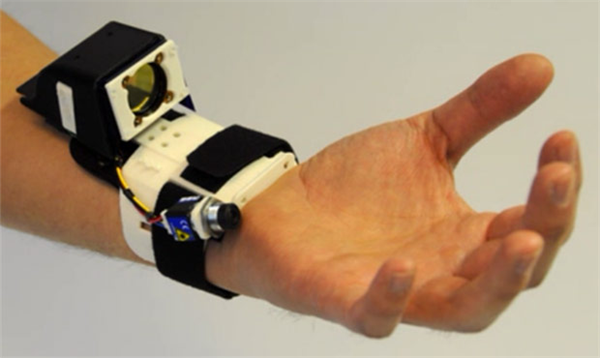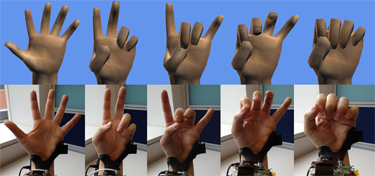Microsoft Unveils Gesture-Sensing Wearable Wrist Sensor

In a project headed by Microsoft Research, a team of researchers are busy putting together and testing a new wrist-mounted prototype that can track finger movement to within one hundredth of a centimetre and interpret simple gestures all in real-time.
The project is named 'Digits' and could well be the next big leap in motion control. Project leader David Kim himself says that the project began out of a desire to design a piece of technology more accurate and less impractical than the company's own Kinect sensor. It also might be a suitable replacement to PC mice and keyboard; where simple pinches, pulls and basic gestures can unlock a world of interaction. As Thad Starmer at the Georgia Institute of Technology in Atlanta tells New Scientist, “[Digits] is a really nice piece of work. Having access to data on a split-second basis makes you more powerful, more in control of your life. This is going to get us to the stage where we use systems without thinking.”
 Unlike Kinect – which needs the user to be standing directly in front of its camera system to track player movement, for obvious reasons – Digits does not require line-of-sight. Using readings taken from the wrist brace's camera which in turn 'reads' infrared beams shone over the palm of the users' hand (where finger movement accounts for a slightly different reading), the data is then fed through special software that allows it to make up a fully 3D, accurate model of the hand in real-time. It even has the ability to not only recognise certain movements and gestures, but that to interpret hand movements in sequence.
Unlike Kinect – which needs the user to be standing directly in front of its camera system to track player movement, for obvious reasons – Digits does not require line-of-sight. Using readings taken from the wrist brace's camera which in turn 'reads' infrared beams shone over the palm of the users' hand (where finger movement accounts for a slightly different reading), the data is then fed through special software that allows it to make up a fully 3D, accurate model of the hand in real-time. It even has the ability to not only recognise certain movements and gestures, but that to interpret hand movements in sequence.
Demonstrating the technology at a symposium on user interface software and technology in Cambridge, MA, project leader Kim said the device “shouldn't interfere with daily activity...we wanted to enable continuous interaction”. What's more, there are already plans to reduce the size of the device even more to around the 'size of a wristwatch', and to make the whole thing wireless. Kinect 2? Pah.
Richard Birkett
Source: Microsoft Research, Credit: New Scientist

